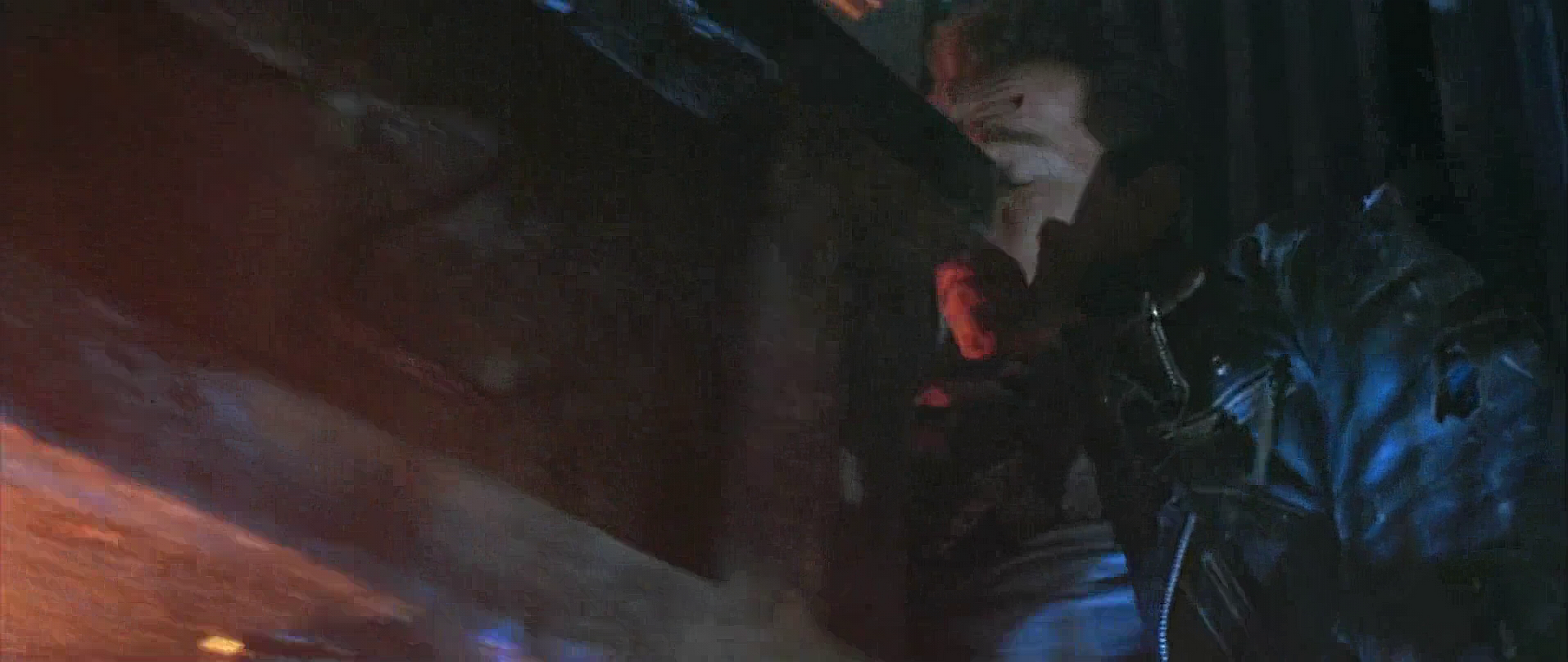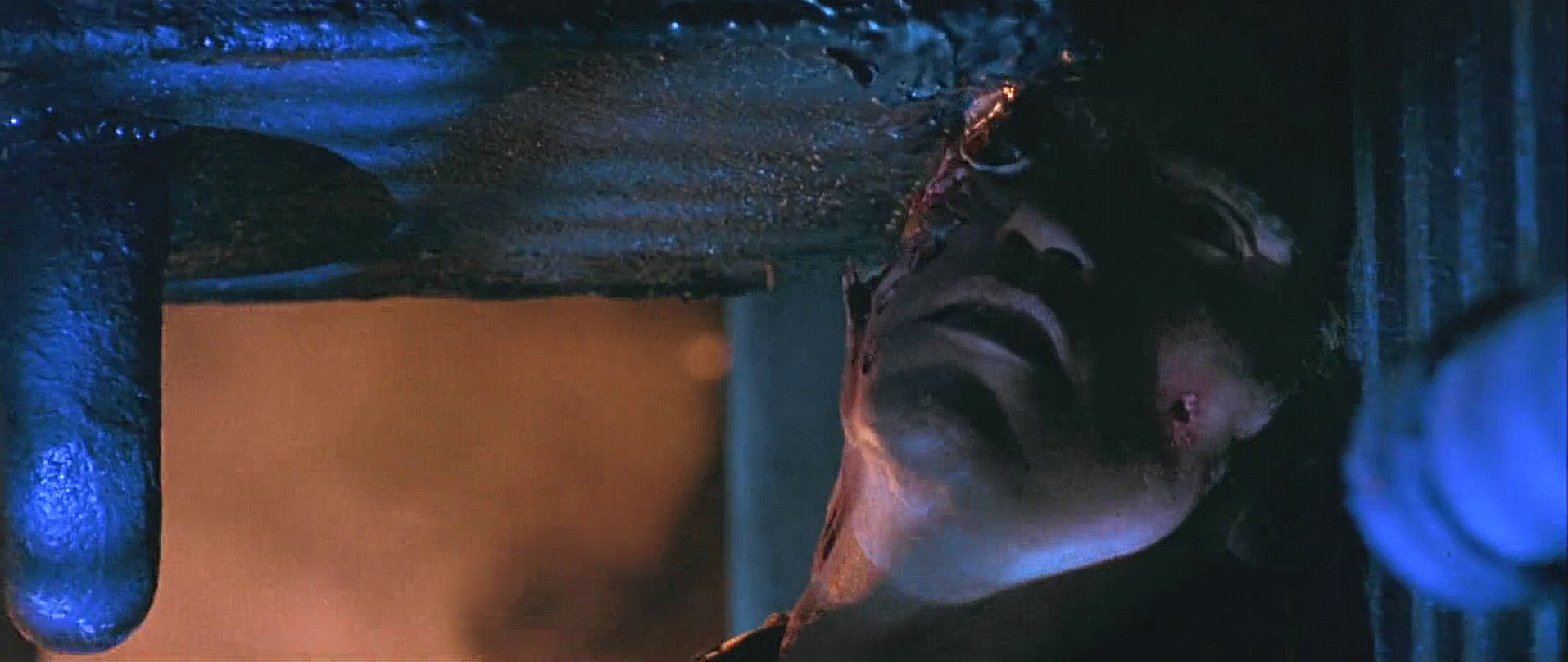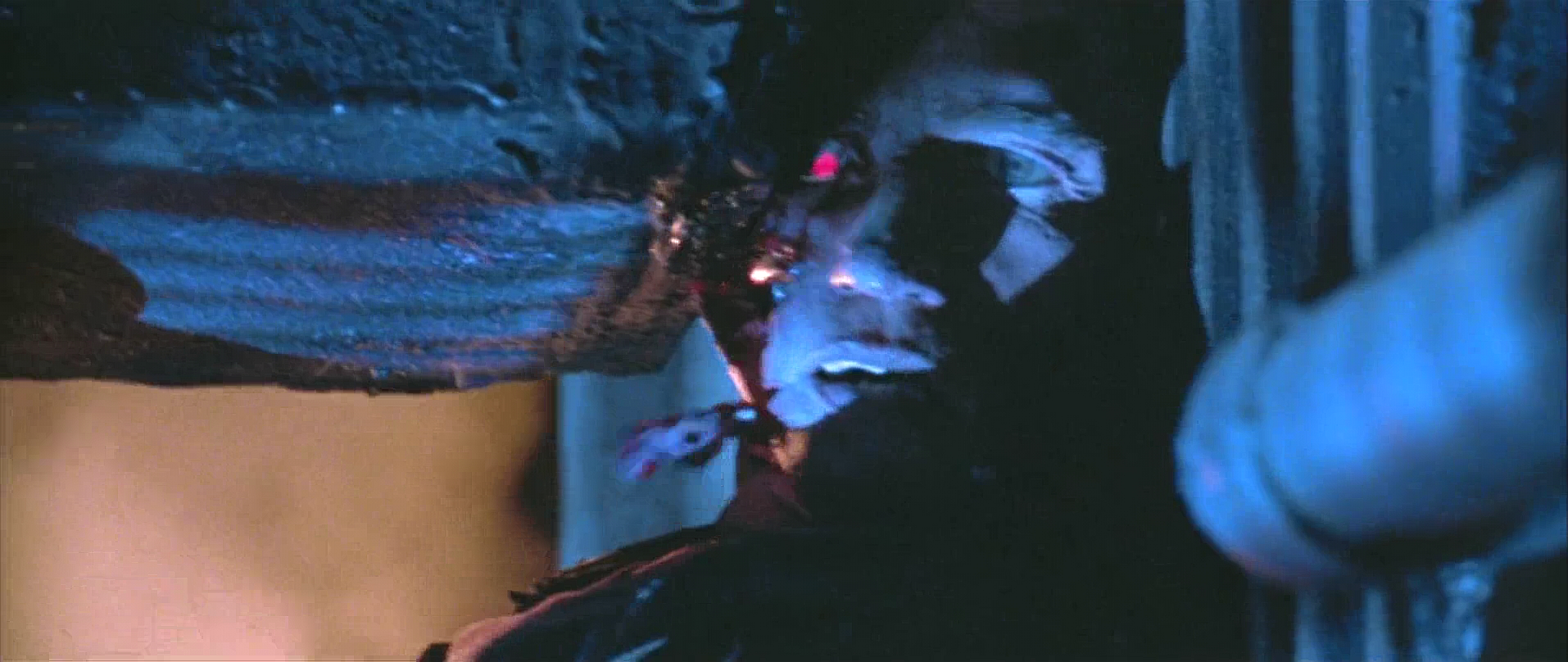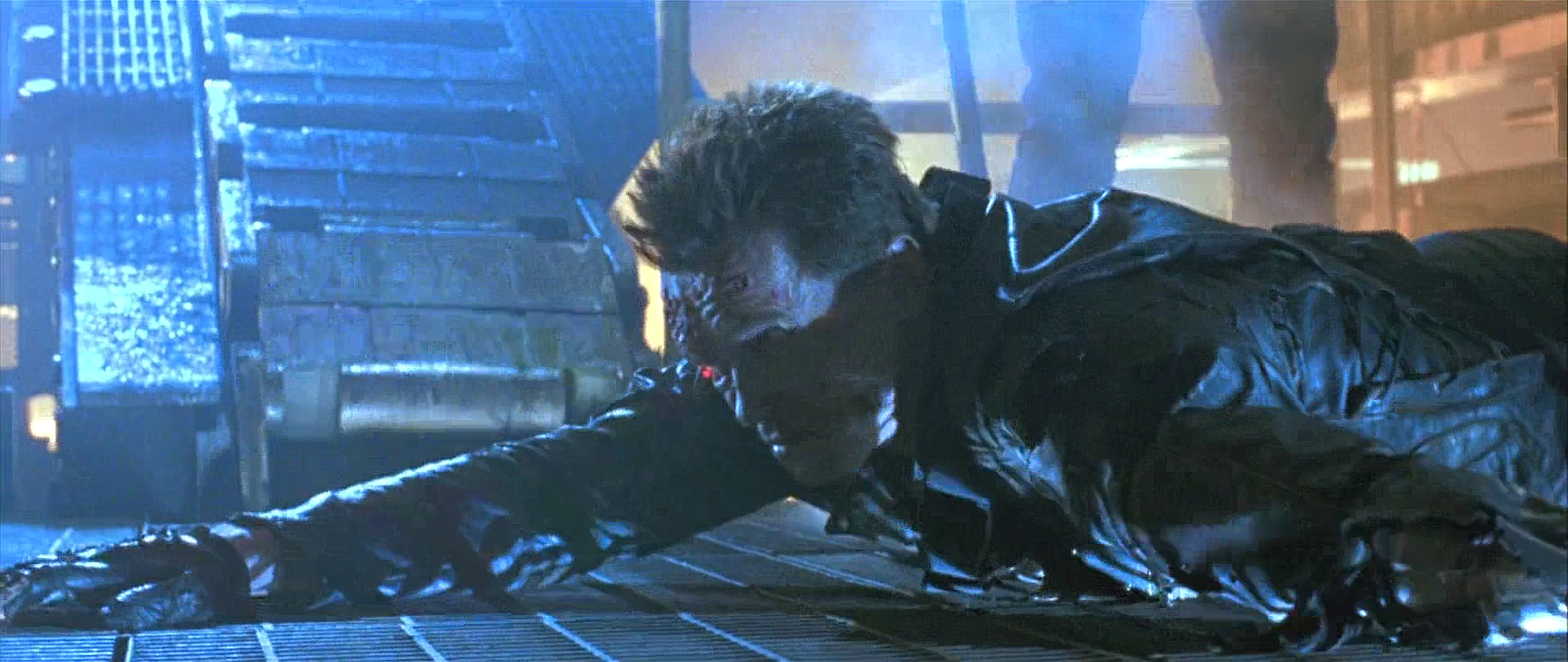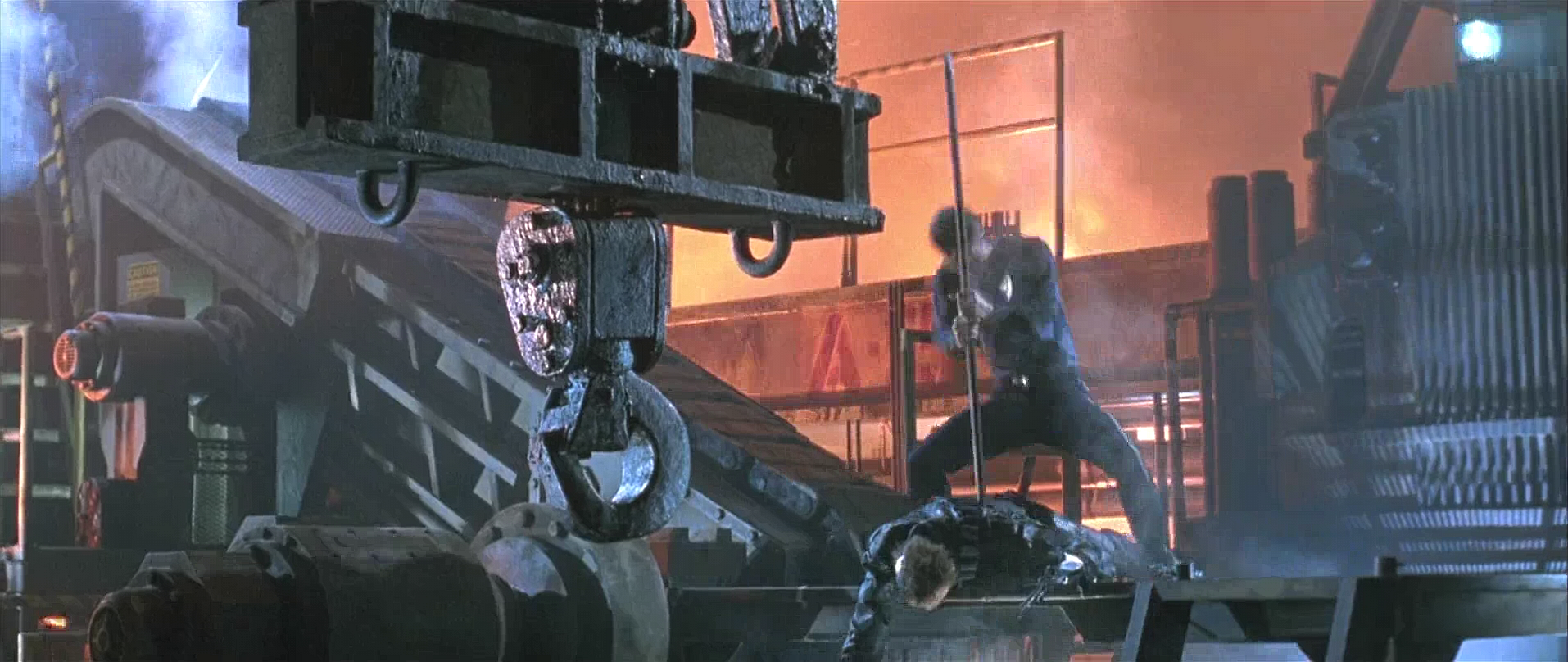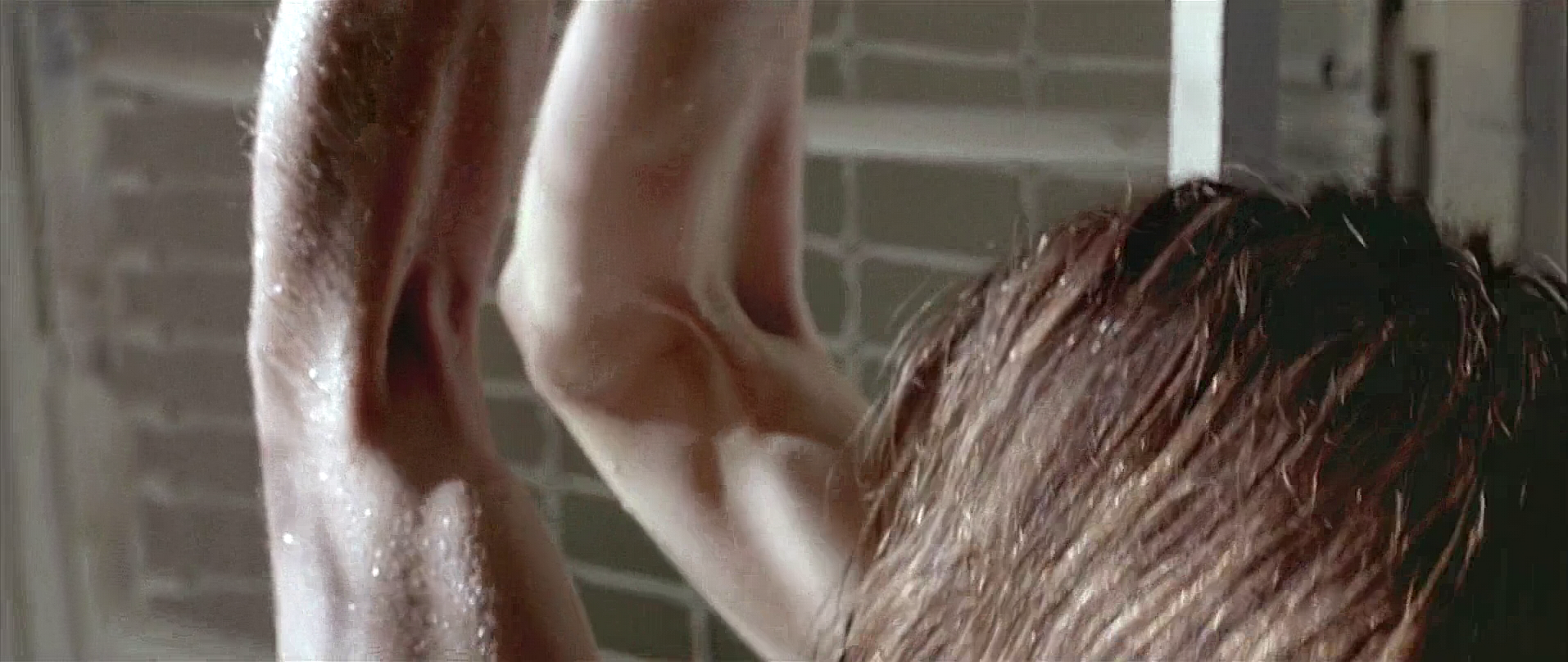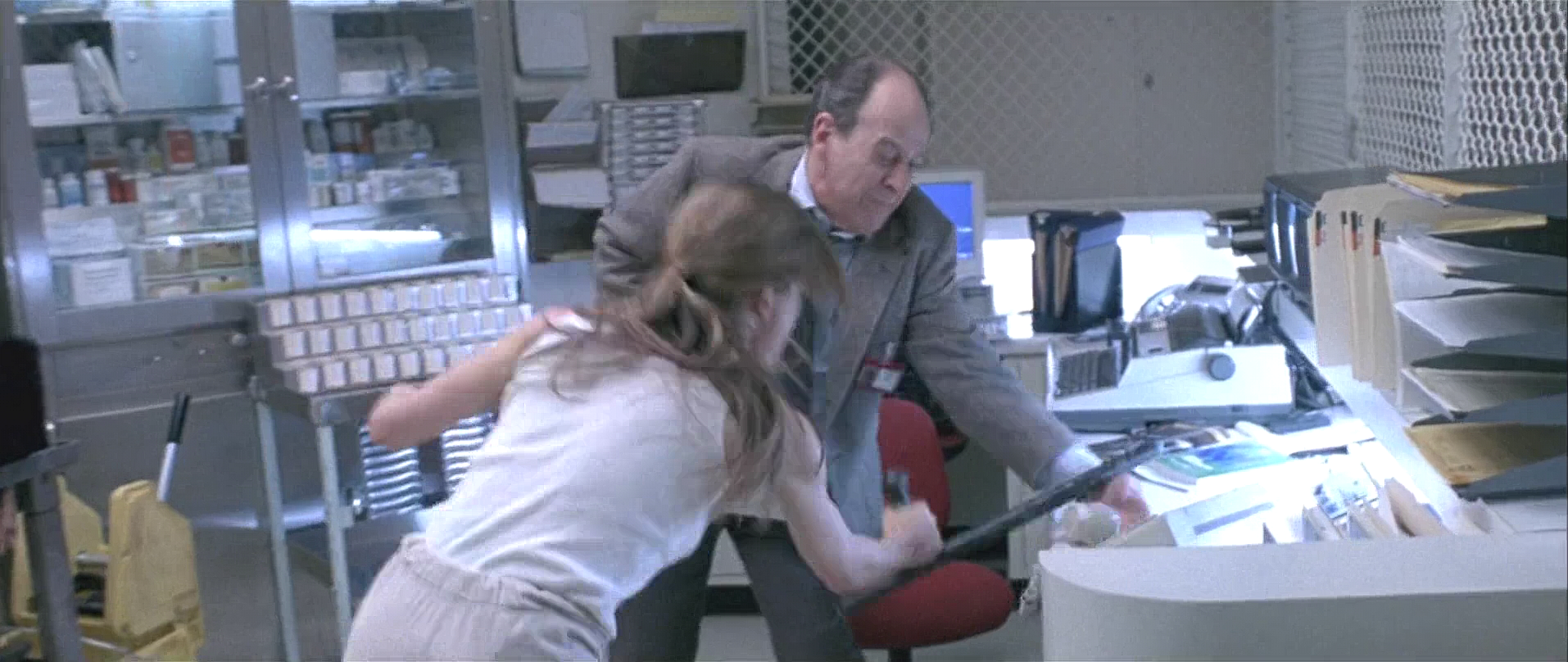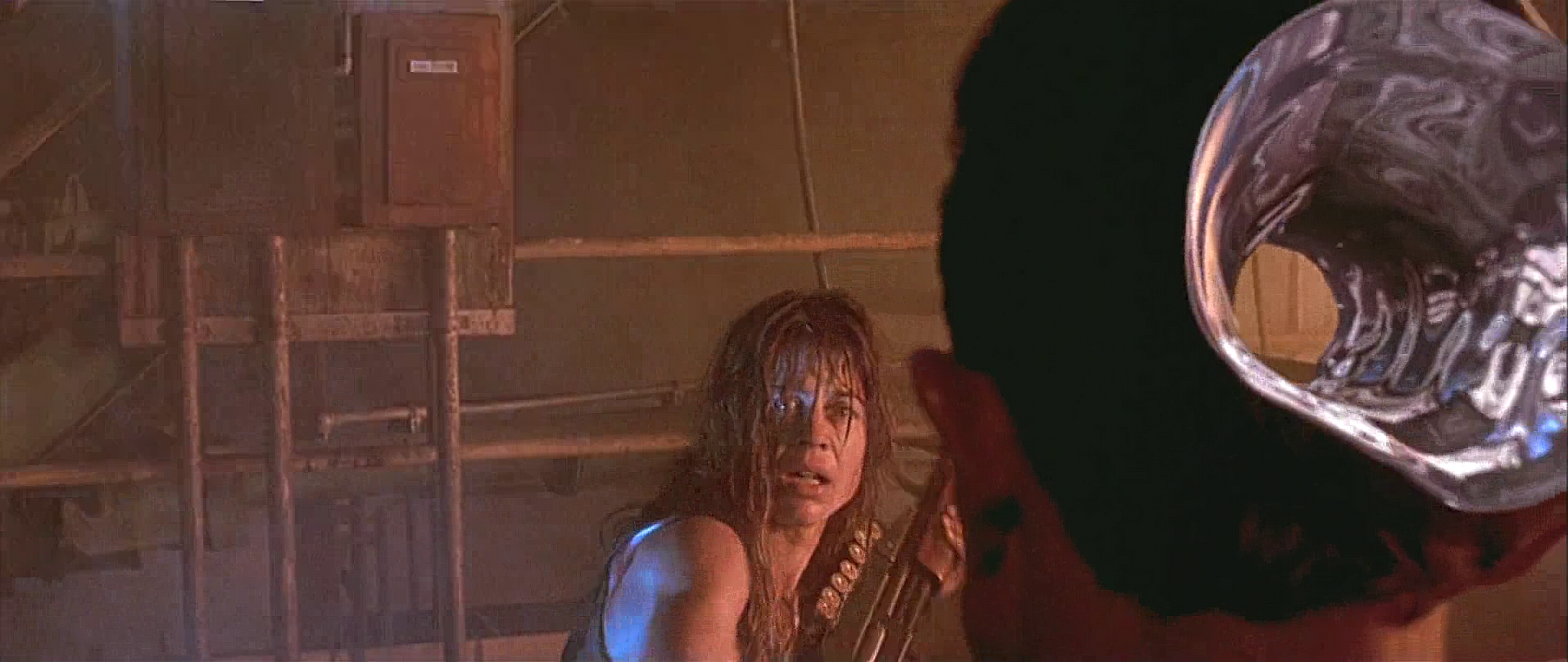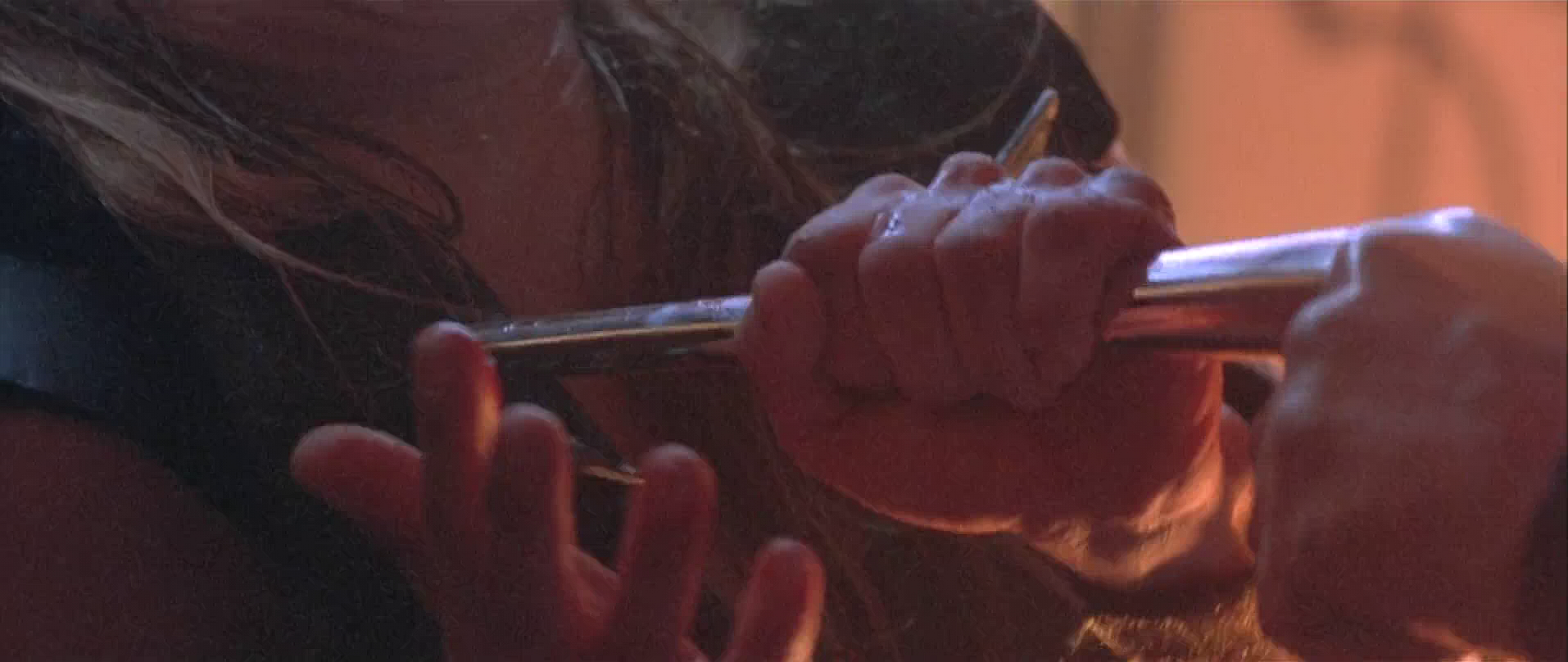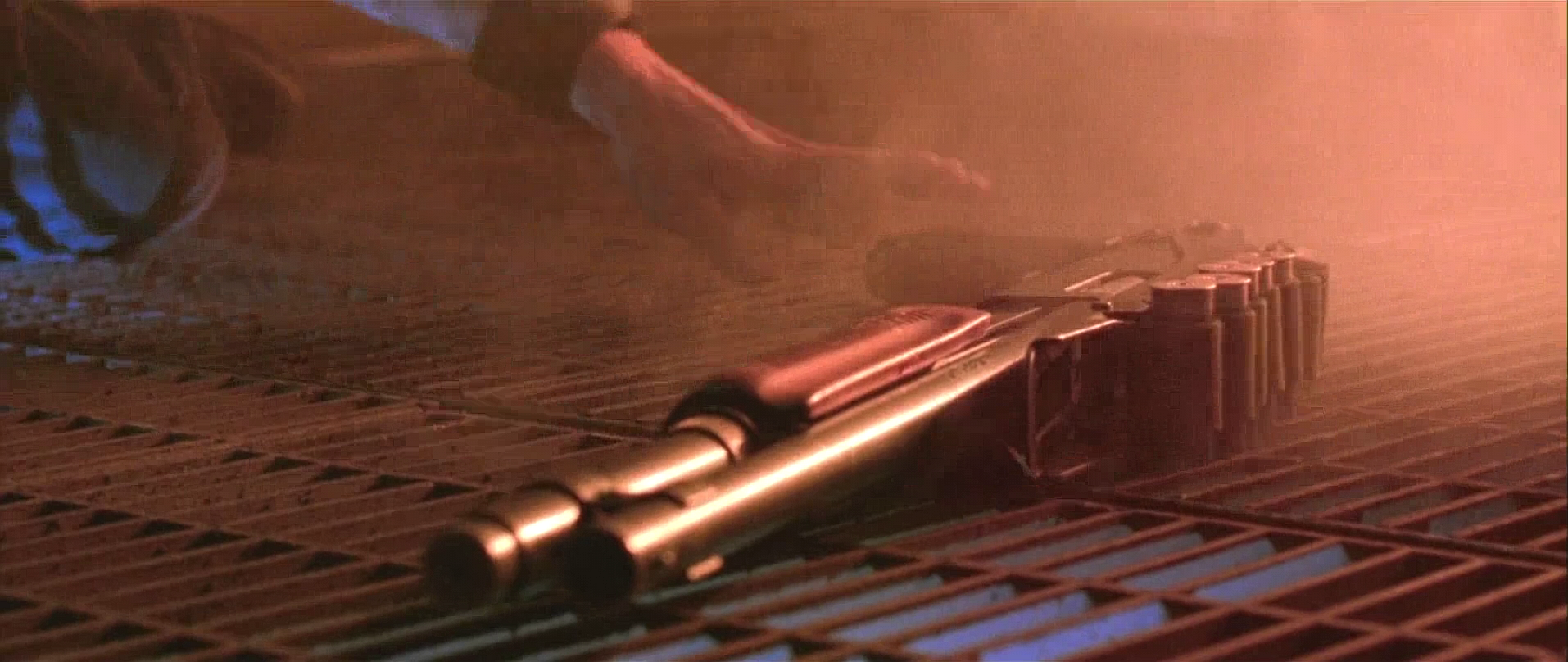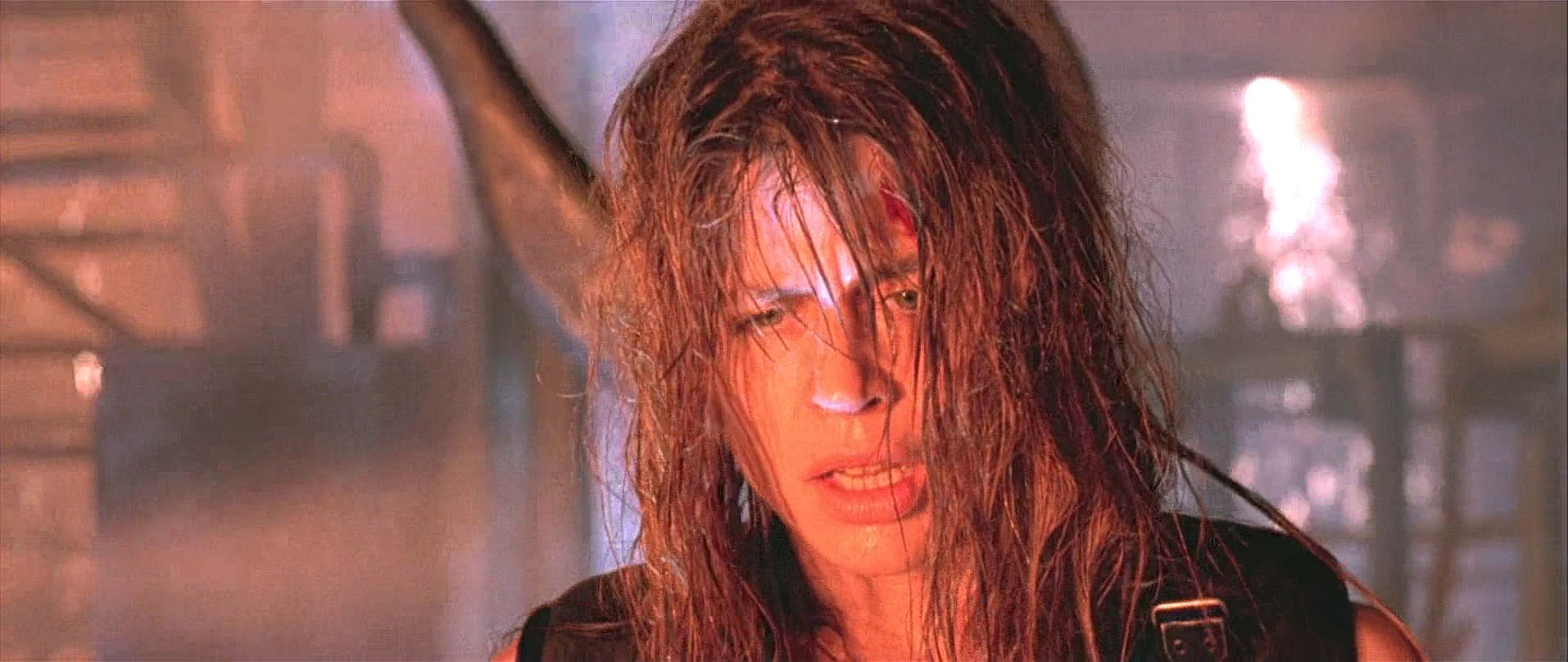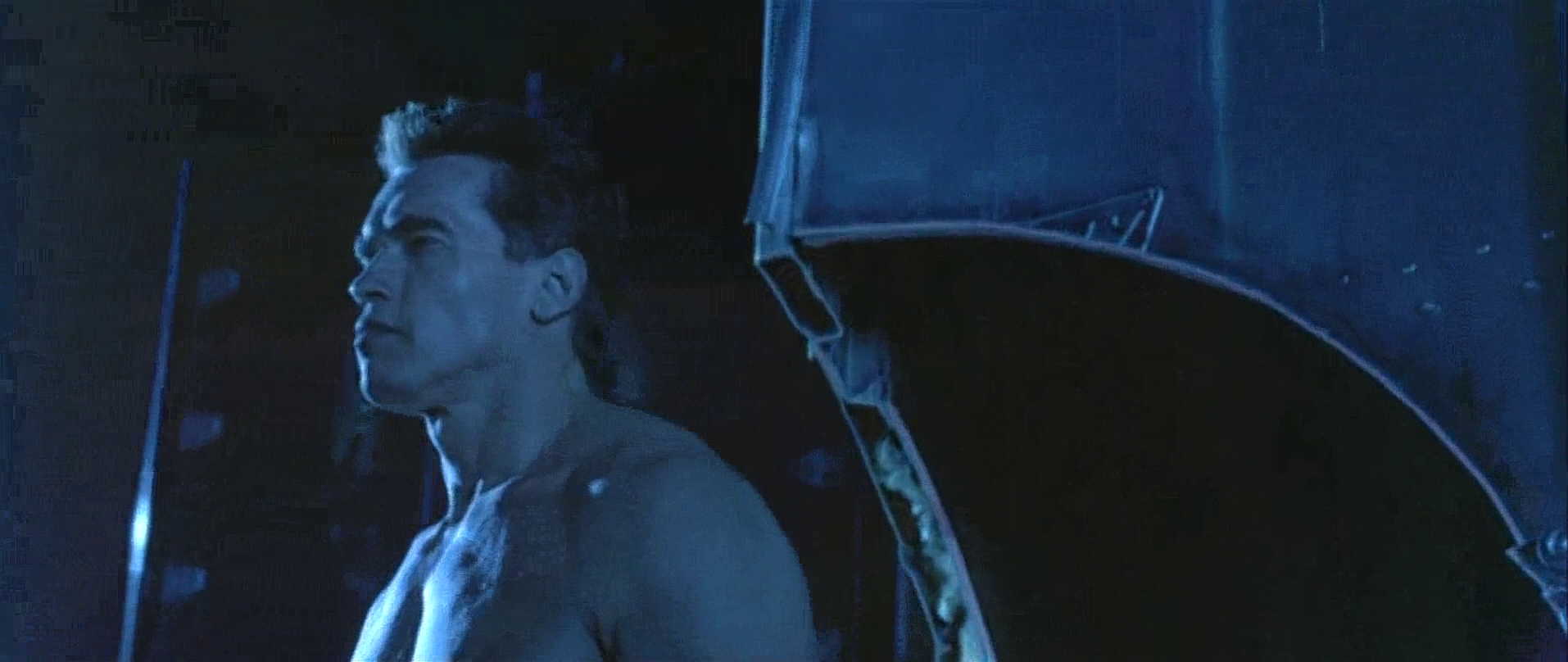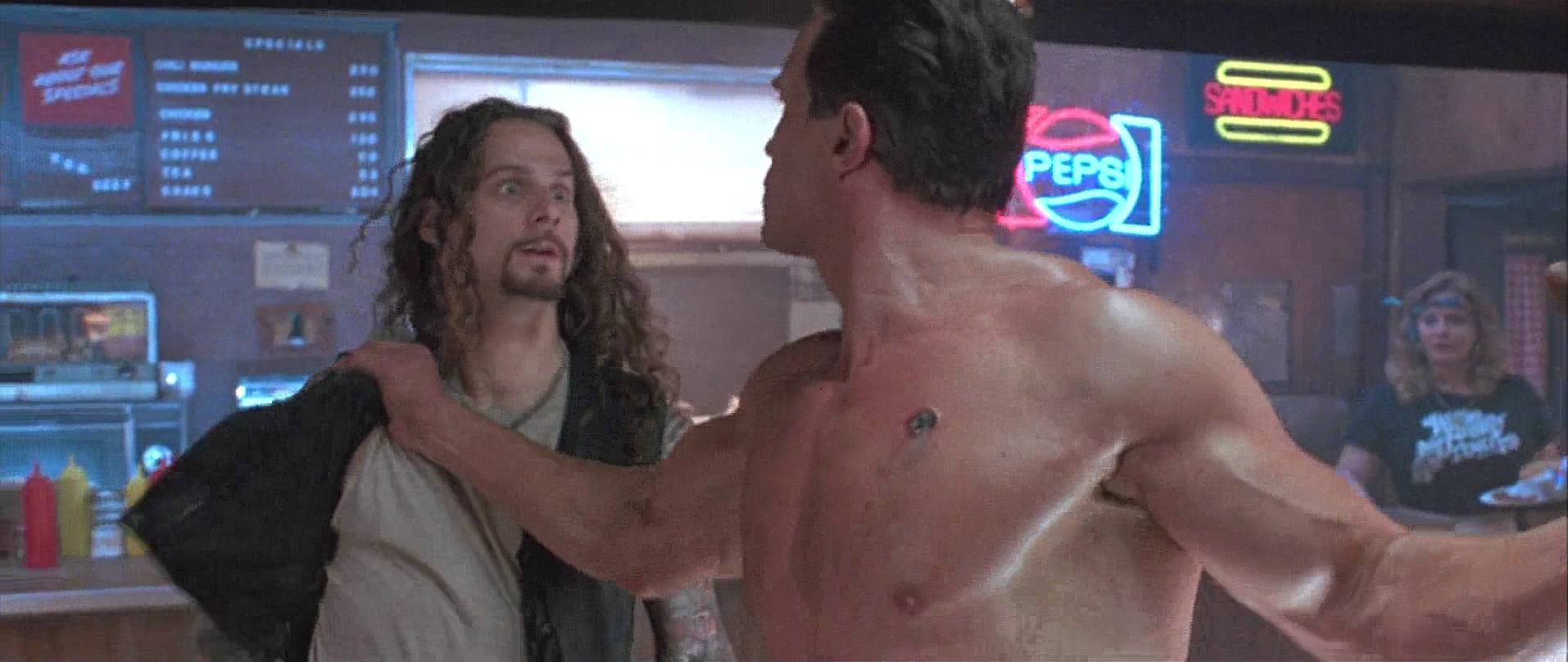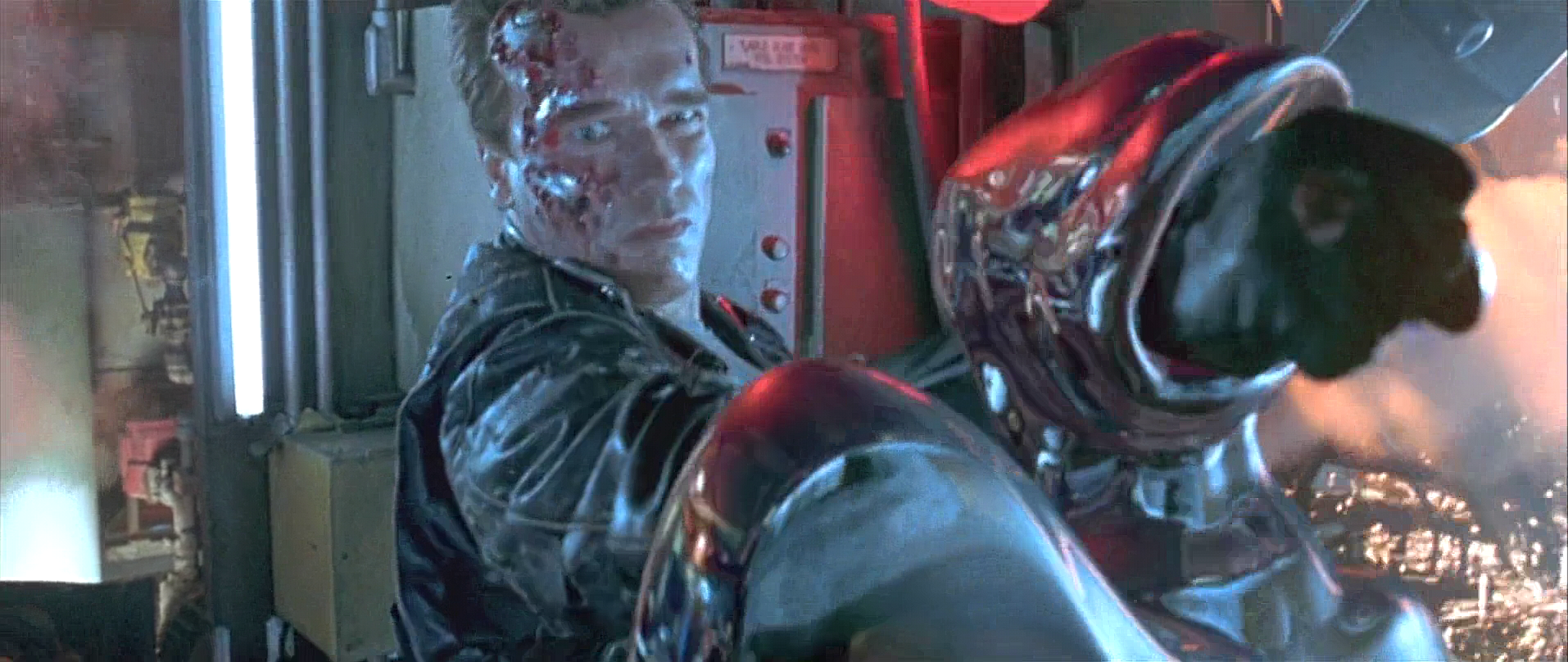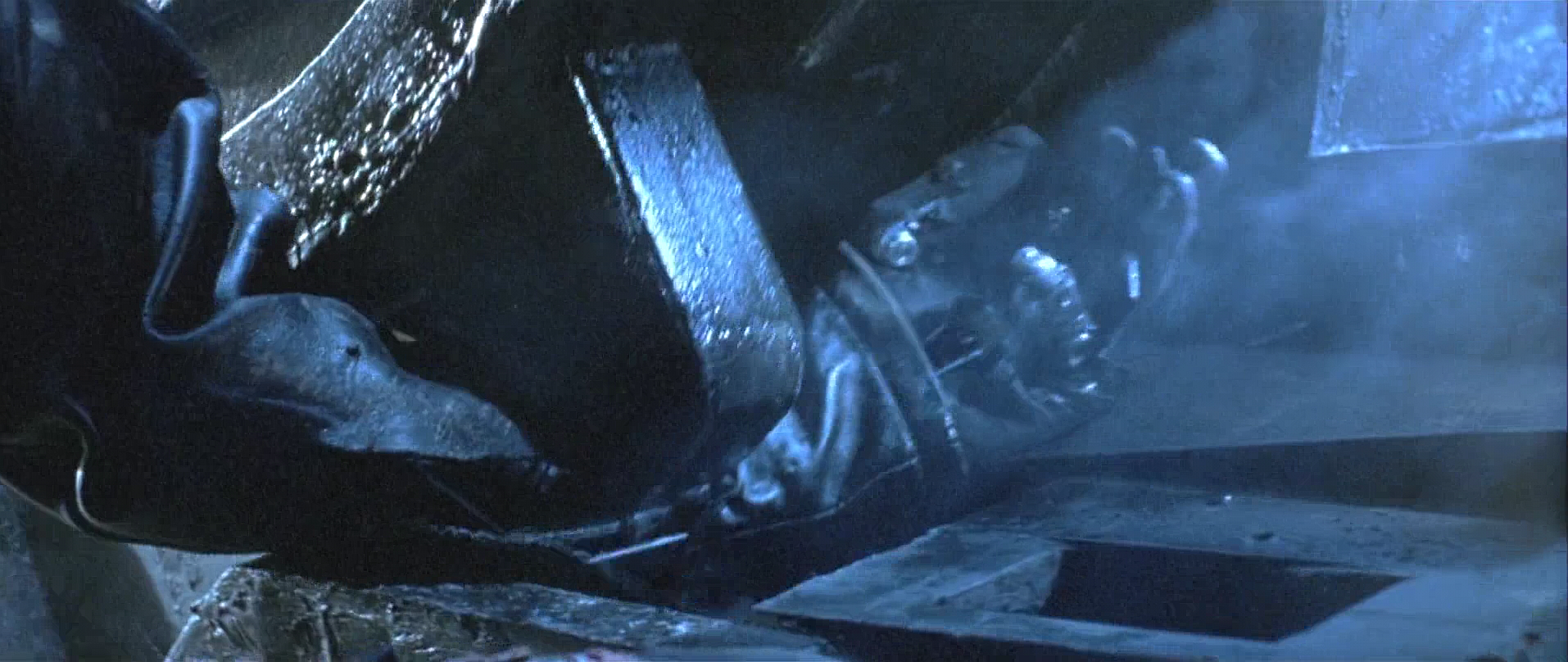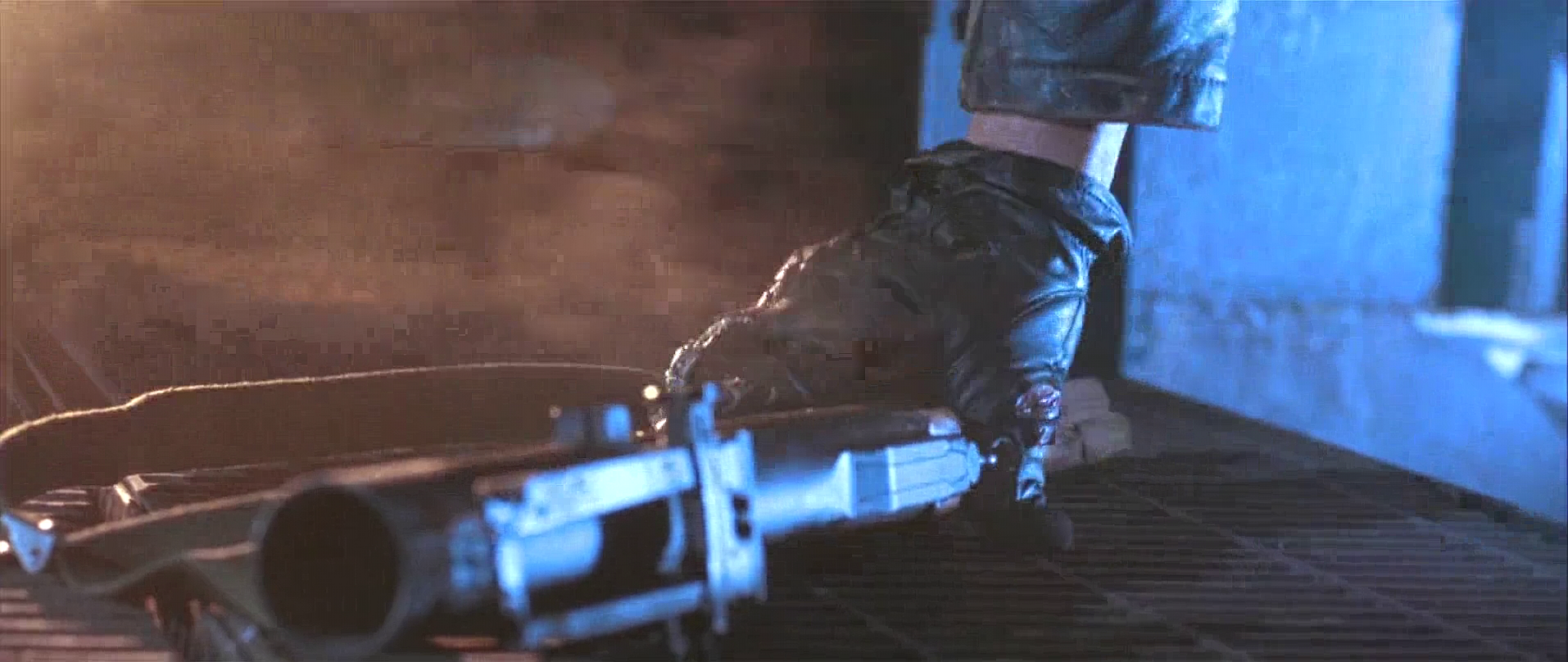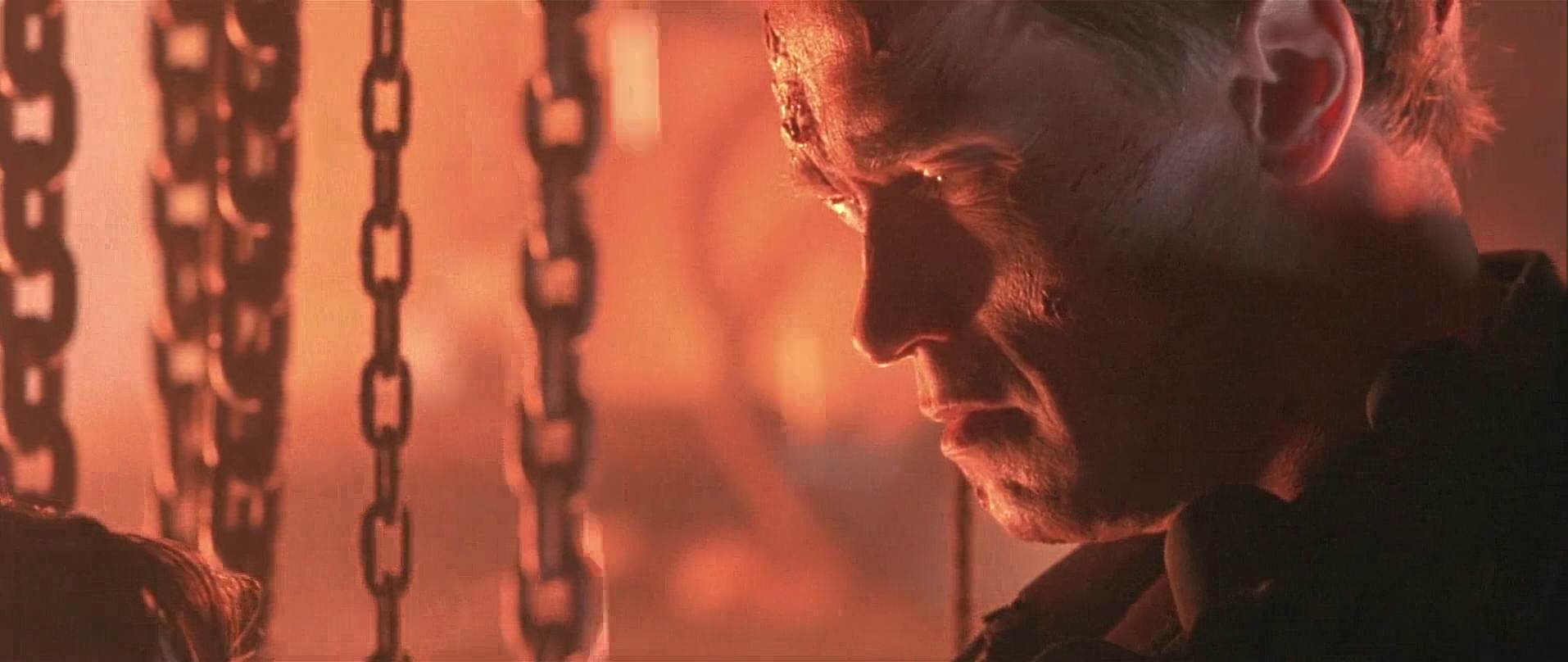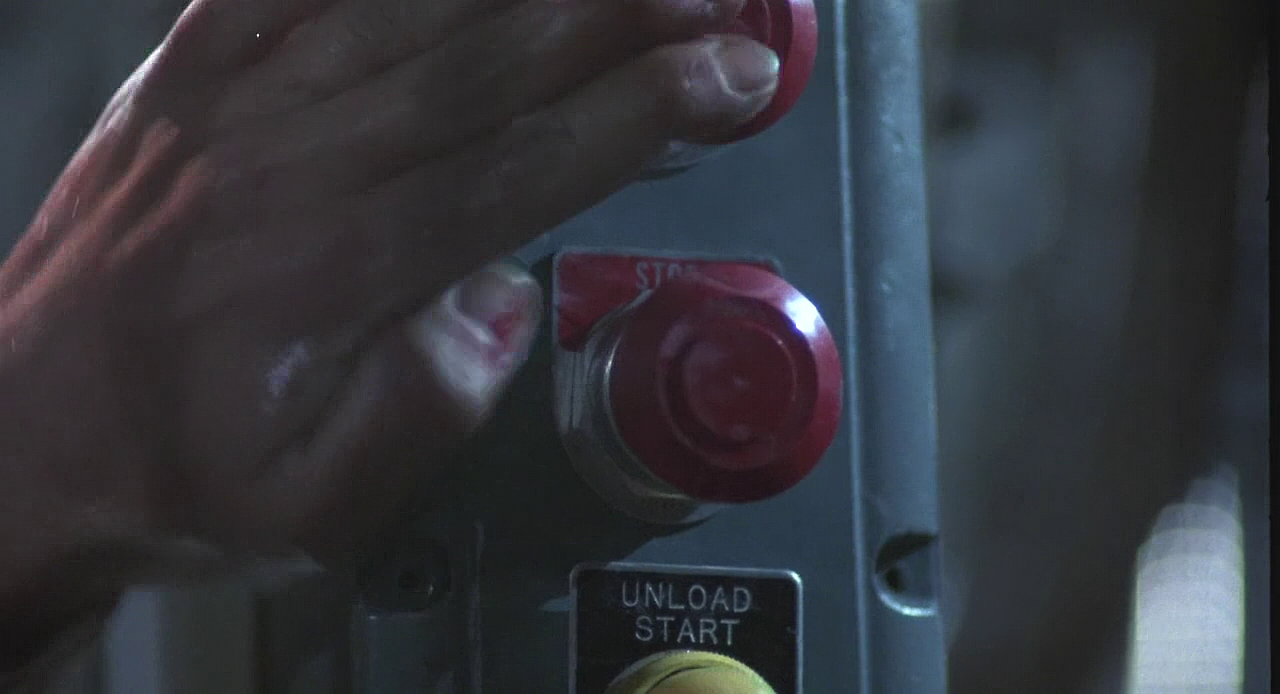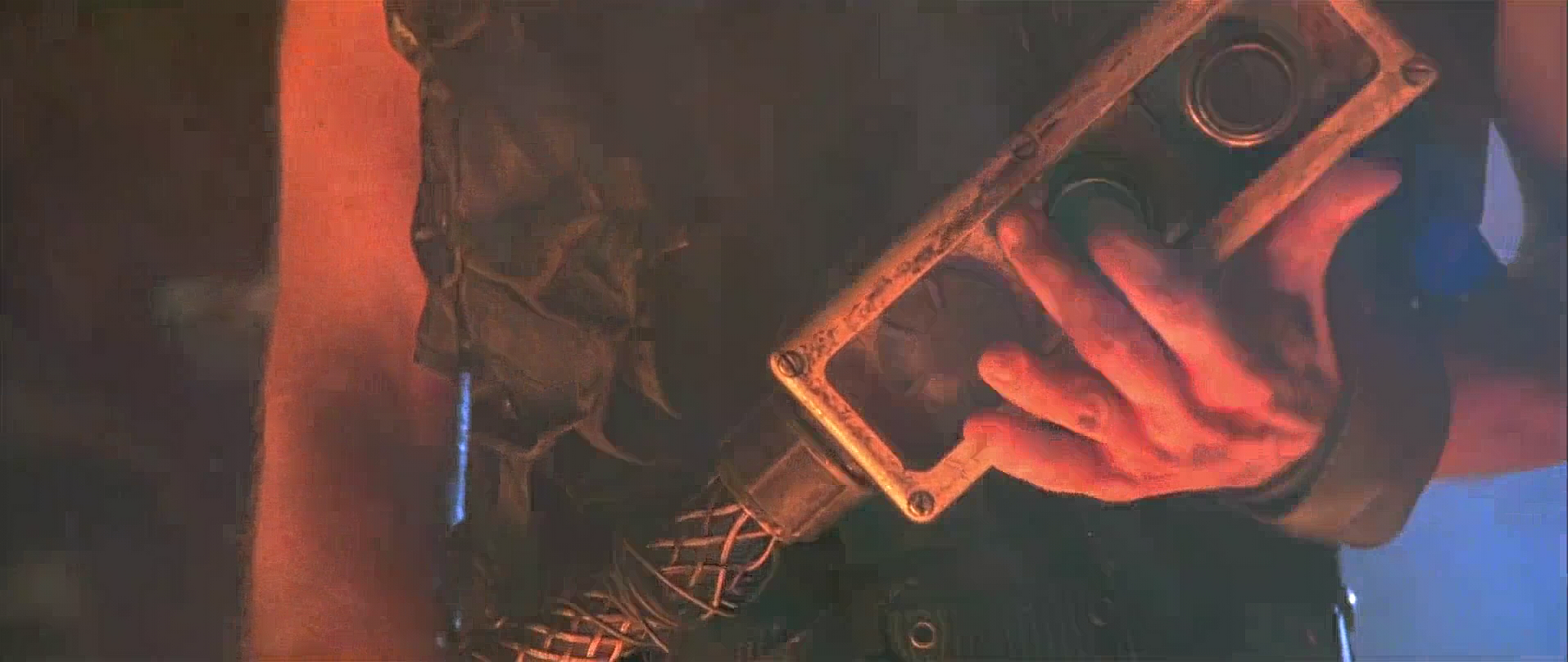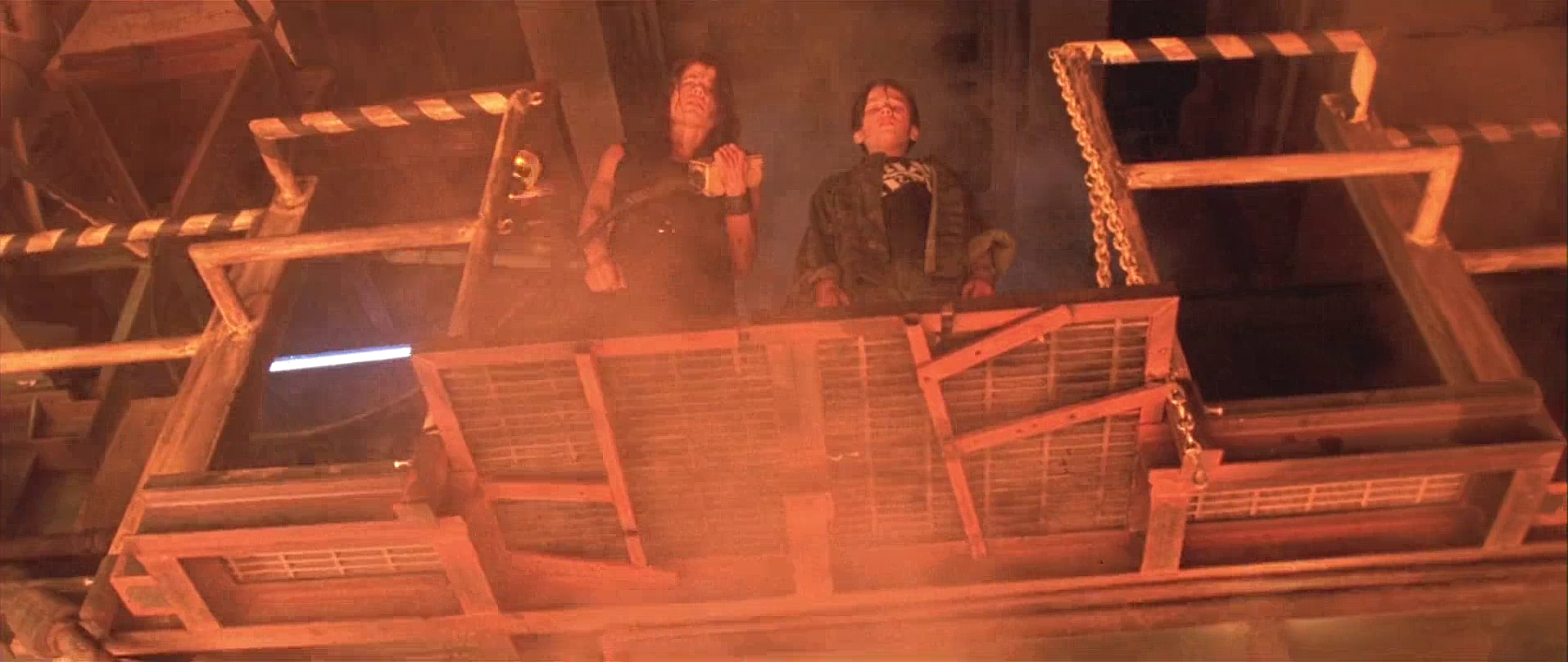I have to go now
Upon its arrival in 1991 Los Angeles, the T800 was an unstoppable killing machine operating under a cold, binary logic. However, in the process of interacting with John and Sarah, it learned the nuances of human behavior. As it became more of an individual, it became less of a machine.
An individual’s being is the result of their continued efforts; therefore the T800’s being is similar to the metaphysical argument of “Theseus’ ship”. Essentially the T800 is deconstructed and then reconstructed, piece by piece, until it is no longer the same, thereby resulting in the death of its original identity. Parallels can be drawn to the playground in the opening montage: the physical structure remains standing, but as the circumstances change, so does the underlying meaning. It’s in the steel mill where we see the T800’s final death of identity.
“I have to go now”
From its original form, there are 3 deaths:
The first death of the T800 as it is defeated by the T1000
The second death where Sarah lowers it into the molten steel
The third, metaphorical death of the T800 as an unstoppable killing machine
This double meaning is accomplished through dramatic irony.
During the battle with the T100, the T800’s tank-like nature works against it - transforming its identity from terrifying monster to tragic figure. It receives a level of punishment which would be fatal to a human, yet it continues to fight – it’s an inversion of Reese’s description:
Kyles Reese: “it absolutely will not stop, ever… until you are dead.”
Here, it cannot win, so it will not stop until it is destroyed.
We are not watching in anticipation of the turning of the tide. Instead, there is an increasing sense of dread. The fact that the T800 cannot die like a human heightens the tragedy, and with every smash of machinery, the sense of pathos intensifies.
Each impact adds to the deconstruction of the terminator. It is injured, and standing against an unstoppable foe, yet like Sisyphus, it continues to fight against the inevitable. The key point here is the complete inversion of T1’s finale, where any semblance of humanity is stripped away from the T800. Here, T2’s climax displays a T800 that is ‘more human than human’.
The overwriting of the T800’s killer identity is fulfilled upon its initial death – and although it replicates the back from the dead return as was seen in T1, here, there is an additional layer of meaning:
Though it is on screen only briefly, we can see that the T800 reroutes its power source due to the damage it received – instead using the heat of the surrounding area. What this means is that alongside its compromised ability, it is also operating on borrowed time. Even if it were to survive the finale, it would ‘die’ once it left the heat of the steel plant – essentially, it is mortally wounded.
This humanization of the terminator does not end here. Rather, it is further heightened by the similarities that we see between the T800 and Sarah, whose actions and iterations mirror one another throughout the film:
Notice the transitions of the color scheme in the above shots – technology represented by blue, and humanity represented by orange – we can clearly see the shifting iterations of these characters during each moment. While the earlier iterations were clear cut, the final versions are much more nuanced. Notice how after this point, the T800 completes its transformation, going from cold machine to an empathic connection.
We then experience the T800’s second death.
What’s key to note here is the thematic echo of the first film – we once again see Sarah pressing the button that terminates the T800, however, like the multiple visits to the playground, the structure is the same, but the meaning is different.
The first press was an act of desperation against an unstoppable foe, and brought a euphoric sense of victory. This second press is filled with reluctance and brings a bittersweet, Pyrrhic victory.
Alongside the T800’s final form, we see Sarah’s acceptance of a machine as an equal, completing her ultimate change. Here she is able to see the moment from three perspectives – that of the teenage girl in T1, the tortured soul throughout T2, and from her third and final perspective, the Sarah that now sees the full picture.
As a final point on the development of their characters, the shot of Sarah looking down as the T800 is lowered is a reversal of their first meeting:
Here, we see the culmination of Sarah and John’s identities after multiple iterations. John has gone back to being a child, and Sarah has gone back to being a mother. From the viewers perspective, it may appear that the characters have returned to earlier roles, however these aren’t the same characters that undertook the journey.
“Why do you go away? So that you can come back. So that you can see the place you came from with new eyes and extra colors. And the people there see you differently, too. Coming back to where you started is not the same as never leaving.”
― Terry Pratchett, A Hat Full of Sky
It’s at this point that the third and final death of the T800 occurs, and with it, the ultimate deconstruction of the Terminator series.


